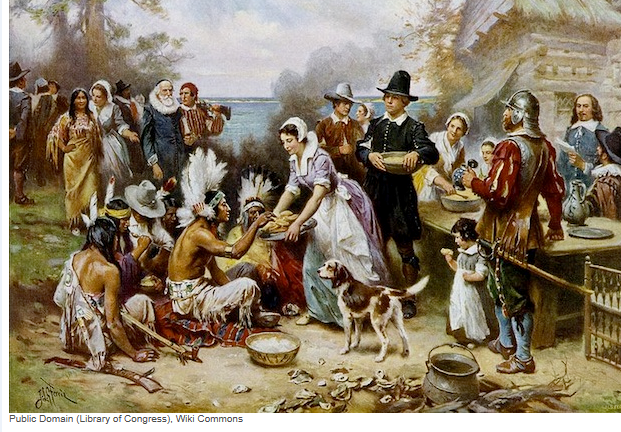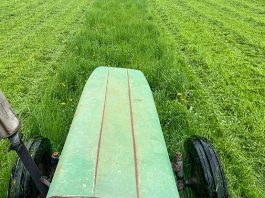This comes to us from Tom Sauer, USDA-ARS, and the Soils Matter Blog from the Soil Science Society of America.
The Thanksgiving holiday has its roots in ancient harvest festivals. Grateful people came together to celebrate a successful harvest. Before trade networks or long-term food storage, failed crops meant hunger or even starvation, so bountiful harvests were causes of great joy.
Americans usually credit the first Thanksgiving in the U.S. to the Plymouth Colony, in November 1621. The Pilgrims celebrated their first harvest in the new world with their Wampanoag neighbors. These Native Americans had helped them learn how to grow grain and vegetable crops that would thrive in the new land, and collect local wild game and fish.

For those first Pilgrims, getting to that bountiful harvest was a huge feat. Very few Pilgrims had farming or gardening skills. The soil found in present-day Massachusetts was also very different from their Native England.In the coastal area of Plymouth Colony, soils are shallow, sandy and stony. This contrasts with the farmlands of southern England, with deep, nutrient-rich loamy soil. In addition, the English soils were more fertile and tillable by hand or with draft animals to a depth of perhaps 6-12 inches. Massachusetts coastal soils were not deep, and sit on top of hard bedrock. The Pilgrims did not bring draft animals (horses or oxen) and although the sandy soils could be tilled or cultivated by hand, they were very stony, making this difficult work.

Sandy soils do not hold the nutrients – or water – that plants need for a bountiful harvest. They are more susceptible to drought, because the water filters through faster. The Pilgrims were lucky that the Wampanoag shared more suitable crops with them, such as corn and squash. These crops are able to grow in less ideal conditions. It’s reported that a late-season rain helped boost the harvest as well.
Plymouth plantation soils were also low in nutrients. This means that without today’s modern fertilizers, yields of their common English crops would be low especially after a few growing seasons as the crops removed what little nutrients were present. If the Pilgrims had not learned from their neighbors appropriate New World farming techniques, they would need to depend on fallowing parts of their farms. Fallow is when farmers let a field sit idle for a year or two, rebuilding the soil, and not producing crops. With food scarce to begin with, this would have devastated the Pilgrims.
Another item the coastal soils of Plymouth plantation were missing was “organic matter.” When a soil is a deep, dark color, it is full of organic matter. This matter comes from decaying plants and animals that live in the soil. You may have seen a decaying tree . Eventually that tree gets broken down into small components and becomes part of the soil. That rich organic matter provides nutrients to plants. It also increases the water-holding ability of the soil. Sandy soils just can’t hold onto organic matter for very long.

One technique new settlers eventually learned from their native neighbors was called “Three Sisters.” This combination of corn, squash and beans allows the plants to work together. Bean plants are called “nitrogen fixers.” Unlike most plants, beans can pull nitrogen from the air, and working with soil microbes, turn it into nitrogen compounds the plants use for food. In return, the plant gives the soil microbes sugars they need. These three plants grown together on the same land took full advantage of the available water, nutrients, and sunlight and provided a diversity of food and protection from total crop failure. Even if one of the Three Sister crops would fail, one or both of the others might make up for that loss.
Many of us have enjoyed gardening, were raised on a farm, or perhaps even operate a farm. Imagine that you could only eat what you grew or could find in the surrounding forests, lakes, and rivers. Not just for a few days or weeks but for months and maybe even years. Eating what fruits or vegetables were in season would not be enough, as reliable ways to preserve foodstuffs to last through the long winter also had to be developed. The early colonists could not rely on regular or timely resupply from England, so they had to become as self-sufficient as possible as quickly as possible. They gladly accepted the guidance of the Wampanoag to supplement their lack of knowledge and skills in vegetable and crop production and tried new crops like corn that were unknown – and unavailable – in England in the 1600s!






I appreciate the article on Thanksgiving and Victor Shelton’s concluding comments. Canadians celebrate Thanksgiving in October with no Pilgrims and indigenous people’s, and no “Indians” back in the 17th century. 🙂
Comments are closed.